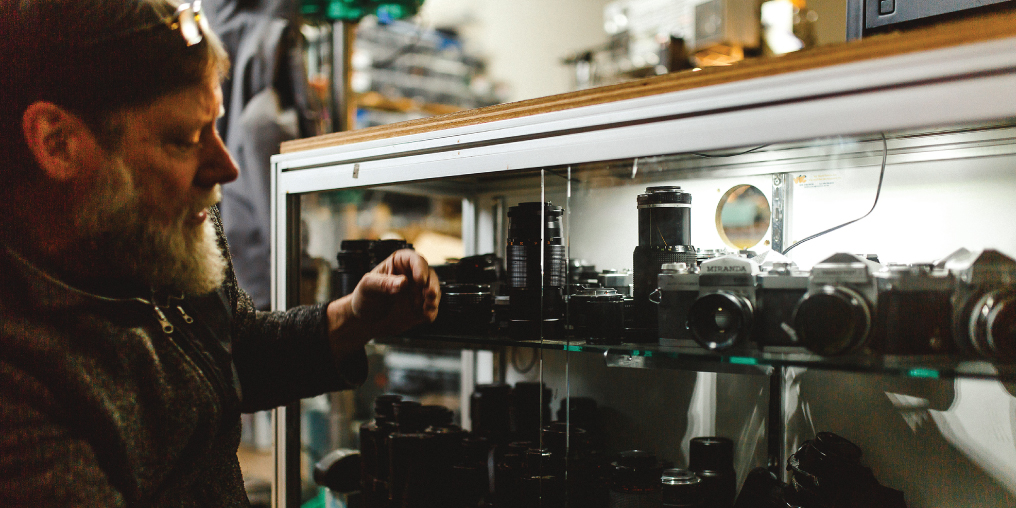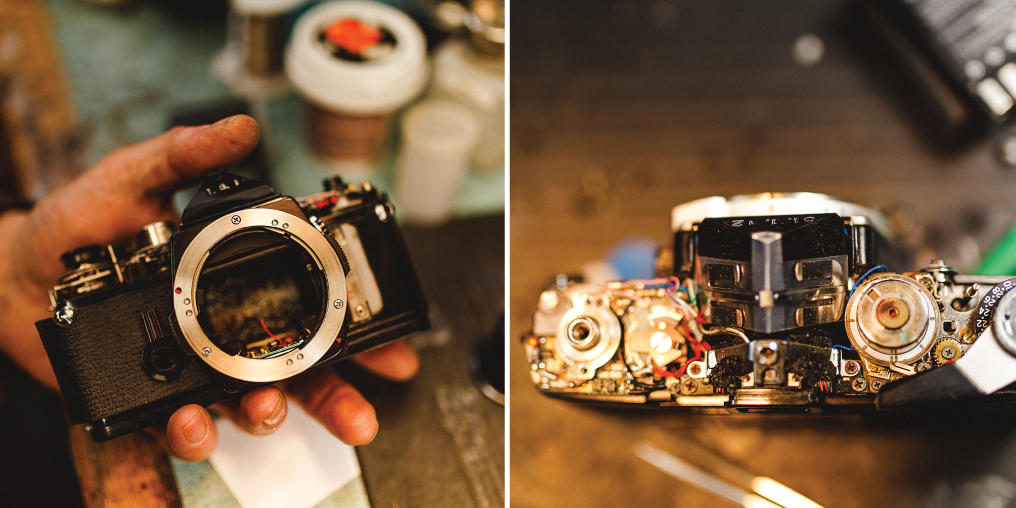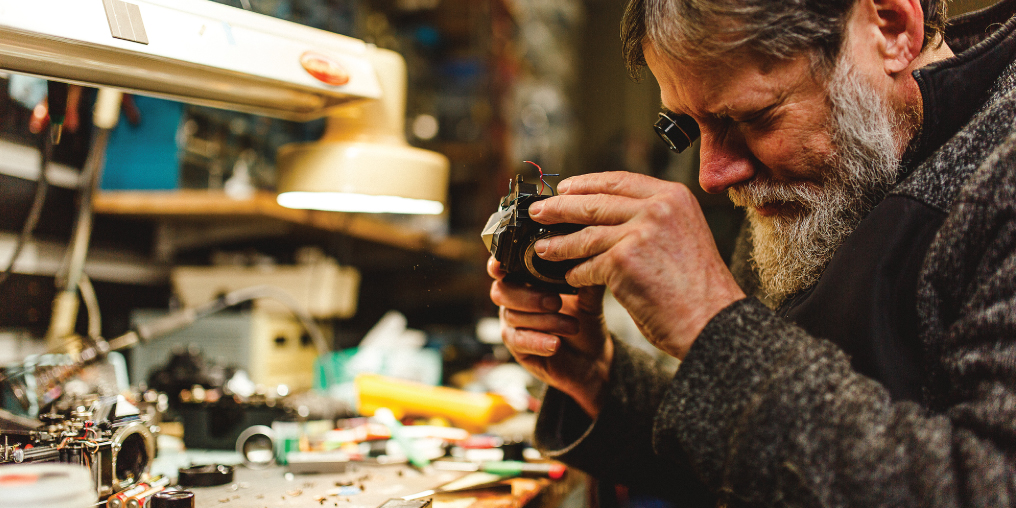When I phone Dave Hall to chat about his Comox Valley-based camera repair business, we struggle through a minute or two of trying to communicate over a bad cell connection before he suggests calling me back from his landline. It seems fitting to for us to use old-school technology to talk about film cameras and photography, and the concept of repairing rather than replacing.
Because he grew up among generations of men who developed their own photos in at-home darkrooms, and who were inclined toward engineering and mechanics, Hall’s love of photography started young. He worked as a photographer in Vancouver in the ’90s; when his own camera broke during that time, he leaned on years of tinkering and fixing things with his father and grandfather, and taught himself to fix it.
Dreams of his shop, Vancouver Island Photography Equipment Repair (or VIPER, which I love), began then, and after Hall moved back to the Island more than 15 years ago, it became a reality. In his little shop in Tin Town, he repairs film cameras, digital cameras, and video recording equipment. He also refurbishes and resells old cameras, which he provides with a 10-year guarantee.
Depending on who you ask, film photography never died. Purists and amateurs alike have been faithfully taking photos all along, but it’s undeniable that the medium is experiencing a surge in popularity, motivated partly by nostalgia.

I imagine it also comes from our desire to make something tangible and lasting. In our current world of AI-generated images and fast-paced visual content creation, it can feel like so much is fleeting, temporary, and ultimately disposable. Images are made and forgotten. The juggernaut of perfectionist entertainment and consumption grinds on and can leave us feeling malnourished even though we never stop eating.
Film photography offers a chance to slow down and engage with creating in a way that can feel almost meditative. You must pay attention; it’s not optional. If you don’t take the time to set up your shot, you waste your shot. Your resource is finite (and not cheap).
I was recently gifted an old Canon FTb 35-mm camera. It’s black and silver, simple and “vintage.” The weight of it is substantial; the metal is cool to the touch. When I use it, I take note of the pressure of my thumb against the lever to advance the film. The effort to slow my breathing, hold myself still, manually adjust the camera’s focus and bring clarity to the details of the shot. The sensation of pushing the shutter button. The feeling of commitment and surrender in that moment.
I am a true amateur, but in my film photographs, a mistake is made beautiful whether it’s a light leak or a blurred subject. For me, the imperfections are part of the process.

Dave Hall is not a purist, and neither am I. We exist in a time of ultimate privilege (in so many ways), and both analog and digital technology are interchangeably available to us. We can snap a photo with our phone and listen to a song we just discovered on whatever streaming service we prefer. And we can take a long-exposure photograph on a camera resurrected from someone’s basement while listening to vinyl.
Hall is doing his part to keep cameras circulating and useful/useable at a time when we’ve become increasingly reliant on expendable technology with a fairly short life span. Go visit his shop, check out what treasures he has on the shelves, and chat with him about the magic of photography in all its forms.

